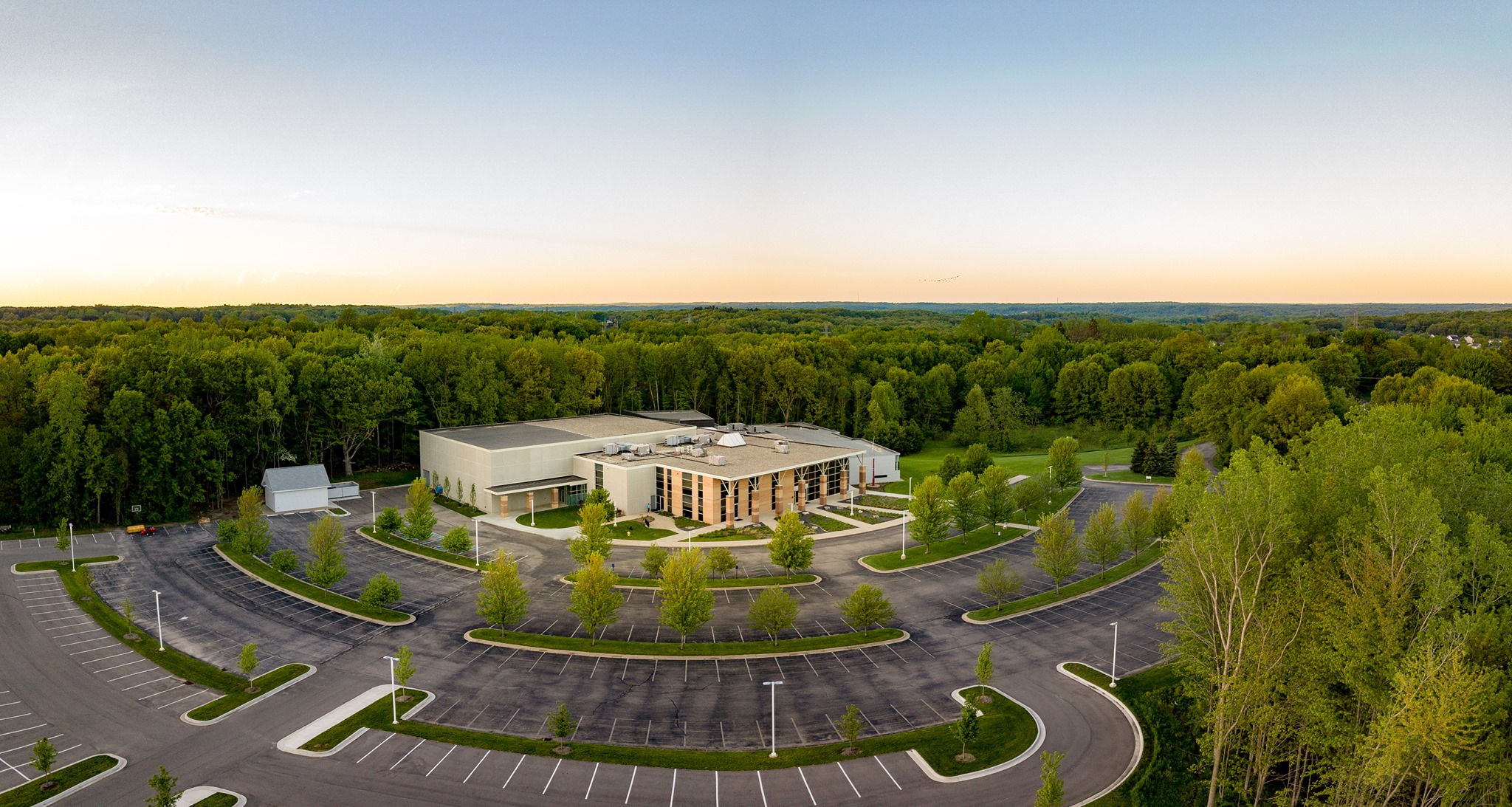Ada, MI – The sign with the slightly askew O in “Keystone” greets you as you pull into the parking lot of Keystone Community Church.
Sitting down with pastor Randy Wassink to talk about the church one thing becomes quickly apparent: this church is deliberate.
From its beginnings in the early 1990s Keystone Church wanted to be different. They are a “church for people who don’t like church.” Keystone does a lot of things intentionally differently than what someone might expect from a church.
Before Keystone leadership ever had a plan or any kind of strategy, they surveyed the people in the community where they planned to build the church. When they asked people what they thought of when they thought of church, two answers dominated the responses: They want my name in their membership and their hand in my pocket. With this realization, Keystone decided two things: we’re not going to have members (they call regular attendees “friends”) and they have never passed an offering plate. While the latter is not uncommon today, with the rise of virtual services and online giving, this was practically unheard of in 1994. Yet nearly 30 years later, the church has grown—in both the number of friends and the building itself.
The building is another deliberate step Keystone took. “We have this deep realization that we need to be good a steward of the resources God has entrusted to us: this area, this land, our place in the community, and in our world,” says Wassink. When it was time for construction, that realization wasn’t just a belief. Keystone put their money where their convictions are.
From the Keystone Community Church Website:
“What if the church was known more for what it’s for than what it’s against? Here at Keystone, we prioritize time and resources to work for positive change in our church, our community, and our world. Our commitment to be a force for good led us to build the world’s first LEED Certified church.”
Partnering with Rockford Construction, Keystone leadership was quick to agree with the idea of making their building the first LEED certified church in the world.
The U.S. Green Building Council explains what LEED Certification is this way: LEED (Leadership in Energy and Environmental Design) is the most widely used green building rating system in the world. Available for virtually all building types, LEED provides a framework for healthy, efficient, and cost-saving green buildings. LEED certification is a globally recognized symbol of sustainability achievement and leadership.
Image: Keystone Community Church, USGBC West Michigan
The carpet, the caulk, the windows, the appliances, everything down to the retention ponds to help filter run-off so that it doesn’t contaminate the local watershed… it all counts. Keystone worked with Rockford construction on every facet of the design and construction to achieve their LEED certification, receiving its certification in 2005, the first such church in the world.
The deliberate approach of Keystone continues inside the building itself. From the lack of iconography (again, for those who don’t like church), to the abundant windows, enough to eliminate the need for lights during the day, Keystone made deliberate design choices. This extends to the ground level windows in the children’s classrooms. “Kids love the outdoors too. We wanted them to be able to look outside and see our great setting.”
Inside the building all the halls are angled, allowing line of sight from the building’s many classrooms. “We wanted teachers to be able to keep an eye on their class while also keeping an eye on the child heading to the washroom, so we angled the hallways.” There’s not a right-angle corner to be found.
From water saving toilets, to pinch free door hinges, to significant effort and investment to separate recyclable materials from garbage, Keystone Community Church continues to consider their impact on both the environment and the community around them. When parking issues arose due to the overlap of cars arriving for the back-to-back services, the church looked at options. Rather than expand their parking lot, which would have removed a section of trees that the local deer population uses as a pathway, the church decided that an adjusted schedule was the better course. By changing the timing of the services, they were able to clear up the parking issue with no additional footprint on the land.
“We don’t talk about it much,” said Wassink of the idea of being responsible with the building and the environment. “It’s really just more of who we are. We try to live like good stewards of all that God has given us—people and resources.”
Pulling away, the thought that Keystone Community Church is deliberate is inescapable. It reflects in every part of their building, philosophy, and services. The strange sign with the crooked O bids farewell. That’s probably deliberate too.




 Copyright
2025
Root and Vine
Copyright
2025
Root and Vine